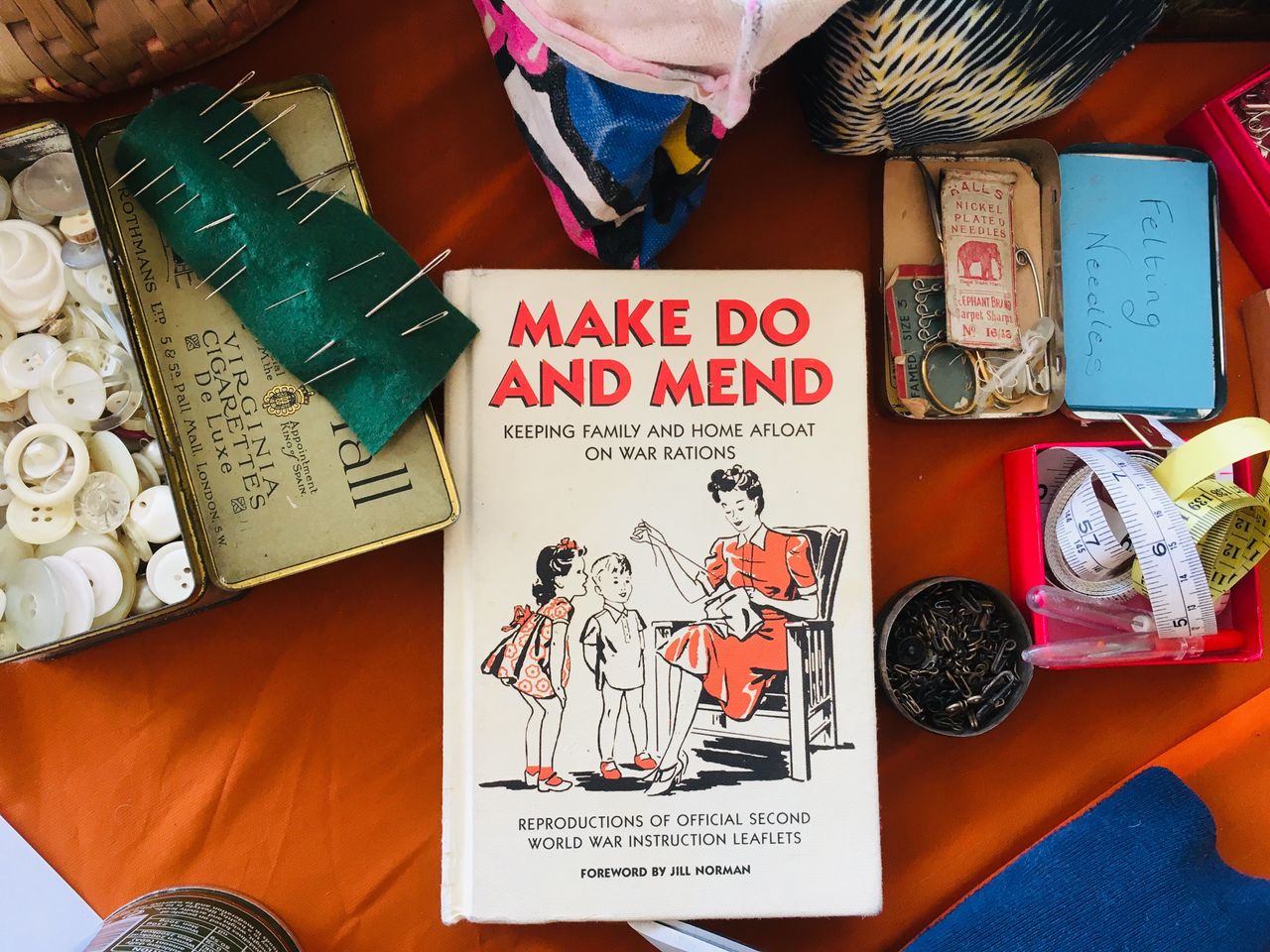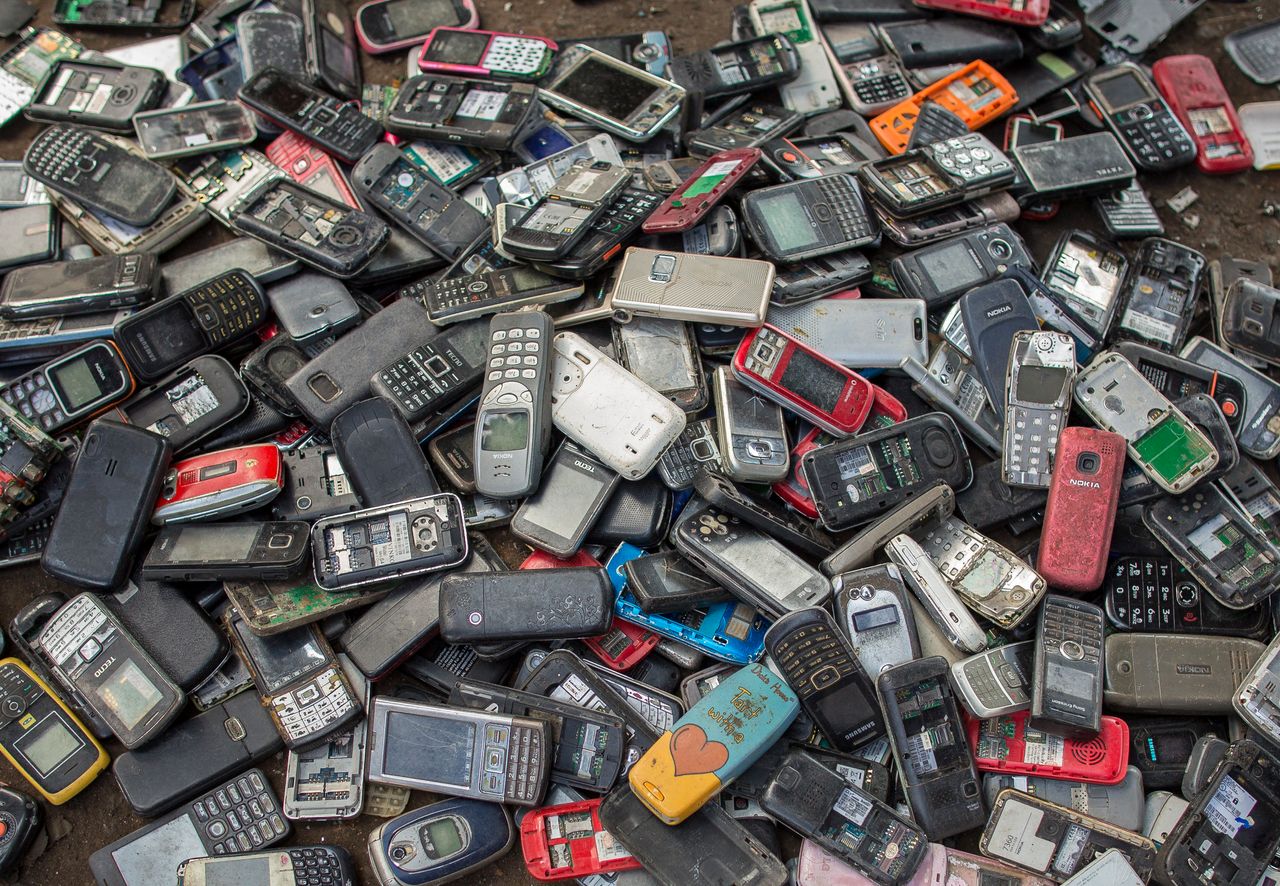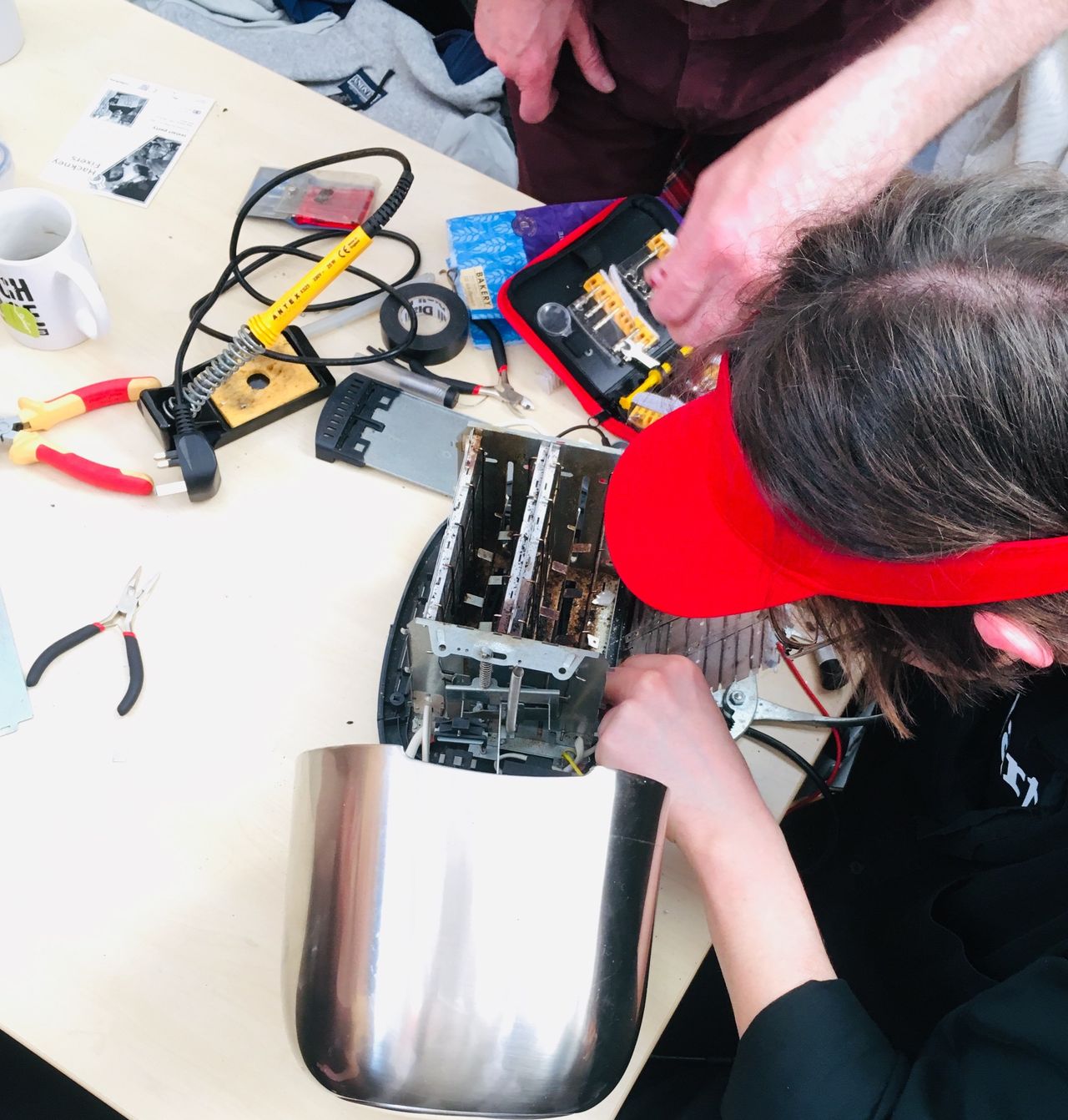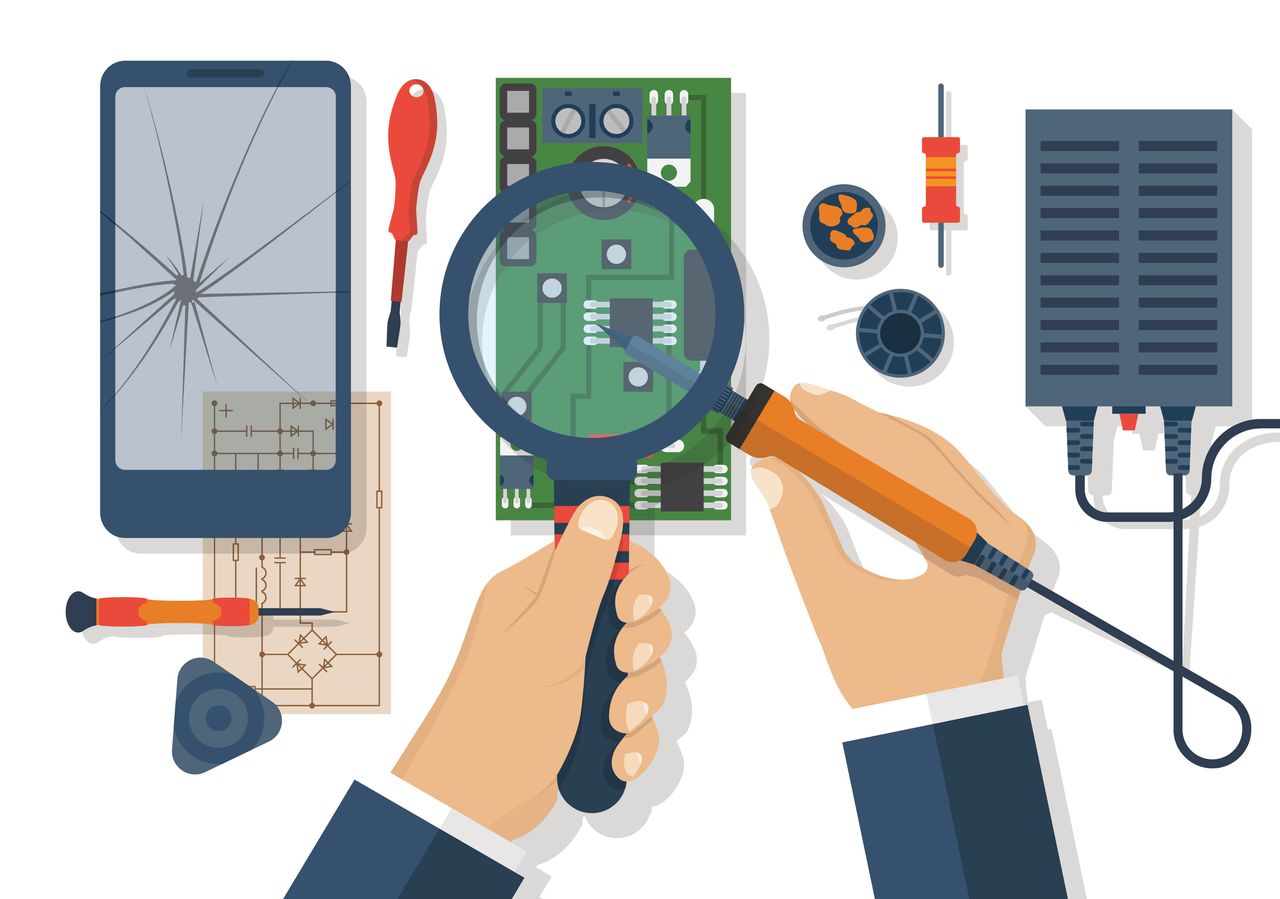LONDON — It’s an unusually sunny winter’s morning and, as Friday night revelers make their weary way home from local warehouse parties, I’m on my way to my first-ever repair event at Hub67, a community center in Hackney Wick that’s a five-minute walk from my apartment.
When I arrive, the ground floor is buzzing with activity. In one room, at least two dozen people are tinkering with electrical gadgets and appliances. I spy toasters, irons, laptops, radios, cellphones, vacuums, lamps and an enormous musical keyboard, and there’s an energetic vibe of organized chaos as volunteer “fixperts” from Hackney Fixers show visitors how to repair their stuff using the pliers, soldering irons and other tools dotted around the room.
Before long, I get settled next door in the clothing section, where fashion repair expert Sarah Klymkiw is about to teach me to reattach a clasp onto a pair of jeans. It’s a simple enough task, but one I’ve had no idea how to tackle, meaning the jeans have been sitting at the back of my closet for months.
I finish the job, proudly holding my now-wearable pants with a new determination to go home and fix everything.

The event I’m at is just one tiny part of a burgeoning repair movement spreading across the world but that has particularly strong roots in the U.K. It’s made up of everything from grassroots repair cafes, DIY bike workshops and tool libraries helping people fix their stuff, to nonprofits and universities advocating for better design in the first place.
The ultimate aim of the event is to empower people to realize that it doesn’t take much to bring seemingly defunct things back to life. The value is immediate, from saving people money to reducing the amount we chuck in the trash.
Our consumption culture comes at a heavy cost. We can buy cheaply and replace often, and it’s not always in companies’ interests to make products long-lasting or easily fixable. We cannot get inside our iPhones, we can’t fix a washing machine if the parts are sealed in, we cannot mend a broken Kindle. So stuff gets chucked in the trash.
The equivalent of one garbage truck full of textiles gets sent to a landfill or burned every single second, thanks to our love of fast fashion. And as we’ve become more obsessed with technology, e-waste (electronic waste) has become the fastest-growing waste stream in the world. Discarded smartphones, fridges, computers and other items pile up in landfills, feeding what the United Nations calls a “tsunami of e-waste” and leaching toxic chemicals into the soil and water.

In the U.S., the repair movement has coalesced around electronics. Consumer movements are arguing for the right to fix their own gadgets, either by themselves or through third-party repairers, and not be held hostage by manufacturers.
Companies want to take control out of the hands of their customers, says Nathan Proctor, director of the campaign for the right to repair at U.S. PIRG, a public interest advocacy group. “They want to be able to make decisions about what we do with our stuff, to the benefit of their shareholders … We need to fix our relationship with electronics and, really, stuff in general. That starts by removing barriers to keeping and maintaining it.”
The U.S. grassroots repair movement has traditionally been more fragmented than the U.K.’s, but that’s starting to change, says Janet Gunter, co-founder of U.K. repair charity The Restart Project. There are now more than 100 registered repair cafes in the U.S., for example.
“We need to fix our relationship with electronics and, really, stuff in general. That starts by removing barriers to keeping and maintaining it.”
- Nathan Proctor, director of the campaign for the right to repair at U.S. PIRG
But it’s not just consumer and community groups fighting for the right to repair. Small repair businesses say their livelihoods are under attack by manufacturers restricting access to repair information, parts and software.
“Blocking small companies from the ability to make their own repairs prevents them from being able to support whatever their customers want fixed, and is just a ruse to sell new products,” says Gay Gordon-Byrne, executive director of The Repair Association, an umbrella organization of businesses, charities and individuals that want or need to be able to repair.
Some small businesses are pushing back. In 2017, Henrik Huseby, the owner of a small electronics repair shop in Norway, got a letter from Apple’s lawyers insisting he stopped using aftermarket iPhone parts to repair phones. Rather than complying with Apple’s demands, Huseby fought back, so Apple sued him. Huseby won.

Despite concerted lobbying from electronics producers to prevent measures like making repair manuals and spare parts available, governments in Europe and the U.S. are taking steps to make products more repairable.
In the EU, environmental ministers have put forward a series of proposals to get manufacturers to make longer-lasting, more easily repairable products — particularly lighting, televisions and large home appliances. In the U.S., at least 20 states are currently considering similar legislation as of this week.
Grassroots action has a big role to play in pushing for this broader systemic change. It’s important for as many people to be calling for policy action as possible, says Libby Peake, senior policy adviser at sustainability think tank Green Alliance. Policymakers aren’t going to act “out of the goodness of their hearts, or out of nowhere,” she says. “If they see there’s real public appetite for change, then they’ll be more ambitious.”
Organizations such as Restart, which helped organize the event I went to in Hackney Wick, are well aware of the power communities have to drive change.
“Part of our project is about creating that sense of constant pressure coming from the grassroots,” Restart’s Gunter told HuffPost. “The game-changer will come when companies realize that making better, more easily repairable products is just inevitable. Either they can get a head start on it, or they can get absolutely slammed and pay the price when regulators come for them.”
For more content and to be part of the “This New World” community, follow our Facebook page.
HuffPost’s “This New World” series is funded by Partners for a New Economy and the Kendeda Fund. All content is editorially independent, with no influence or input from the foundations. If you have an idea or tip for the editorial series, send an email to thisnewworld@huffpost.com
